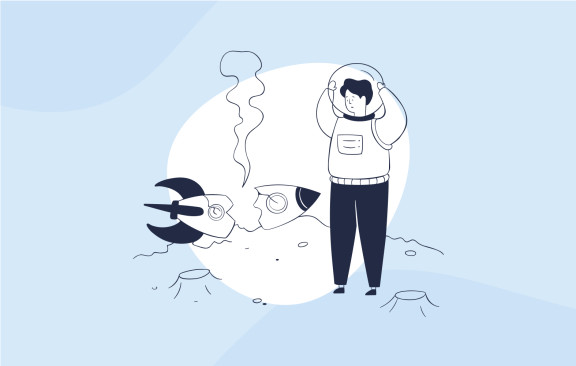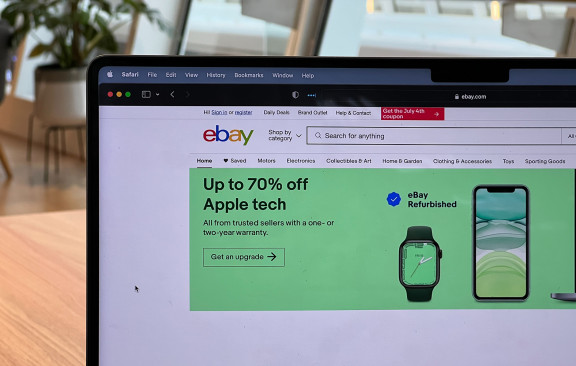Very little is more important to an eCommerce site than its SEO score.
Without your help, Google's search spiders will have a hard time finding, indexing, and ranking your site anywhere near the front page of search results. Unfortunately, SEO is a shifting concept, with many variables and fluctuating standards that are even difficult for industry experts to keep up with.
In fact, it's quite likely that you're making more than a few mistakes right now, without even knowing it.
Today, I'll go over 11 examples of less-obvious problems that are easy to overlook in your SEO efforts and ways you can address these issues.
1. Relying on ranking alone

Believe it or not, search rankings should not be the sole indicator of SEO success. Google uses hundreds of different signals in its algorithms in order to rank sites. What's more, Google regularly updates the process.
Why relying on ranking alone is an SEO mistake
The factors that determine site rankings can change at any moment. Focusing too hard on your ranking can lead to a bad case of tunnel vision. You'll be blind to the bigger picture, and when your tactics no longer work, you'll have no idea why.
Also, a high ranking doesn't necessarily mean a lot of conversions or sales. You need to focus your SEO efforts around keywords and methods that get you the most buyer traffic.
What should I do?
You can get a better idea of your e-commerce site's SEO by looking at the ranking in conjunction with other metrics, including:
- Fluctuations in your non-paid traffic
- This will show you how many people are clicking through to your page from search results, whatever your ranking.
- Revenue from organic non-branded visits (those that come as a result of keywords rather than the name of your business)
- This can show you which keywords and SEO strategies are bringing you the most buyer traffic. You can then focus your SEO efforts around these high-performing searches.
Keeping these factors in mind, as well as your ranking, will give you a better picture of your performance in the search results.
2. A lack of product reviews

You may think you have an awesome product page with high-quality images, and fantastic-sounding copy, but if you don't have any objective third-party reviews, you may be missing out on some significant volumes of traffic.
Nearly 3/4 of online shoppers make it a point to read a review of a product before making a purchase, so it's in your best interest to have them on page and ready to read.
Why a lack of product reviews is an SEO mistake
As far as SEO goes, reviews are an effortless way to get new content onto your product pages constantly. You can improve your rankings for "product review" search terms. You might even find your site ranking for long tail keywords from the reviews.
Since the users are writing the reviews, you don't have to lift a finger and you're getting content with the wording your buyers naturally use.
What should I do?
Try adding reviews to your online store. A couple of resources for adding reviews include:
- Yotpo. — Affordable options (including a free "Lite" version). Easy to use.
- Trustpilot — More expensive, high-end option (but also has a free version).
3. Duplicate content
Everyone's taught about the perils of plagiarism in high school, yet you still get the occasional misguided student that thinks copy-and-paste at the last minute is a valid strategy for his or her term paper.
Duplicate content can be anything from an article you've copied, to product titles and descriptions taken directly from the supplier (which aren't usually very good anyway). Basically, any content on your site that is also on other sites around the internet will be seen as "duplicate content."
Why duplicate content is an SEO mistake
When there are multiple sets of the same content, only one of them will rank in the search engines.

If that content existed somewhere else before you took it, chances are you're not going to rank well at all. In fact, you're more likely to get penalized.
What Should I Do?
Customize your product headings and descriptions as much as you can while keeping them relevant to the product. It might be a little tricky, and it will take time, but from an SEO standpoint, it’s crucial.
A good tip for this is playing to people's emotions. Add a little story about when they might want this product or how it can relieve their troubles in some way.
You also want to avoid naming multiple pages on your site identically. You are not George Foreman, and these pages are not your kids — they all need different names!
4. Lack of structure
An effective site structure along with some well-placed internal links will ensure great usability on your site. It can lead a customer from one product to related products they're also interested in. Very useful stuff and an easy way to increase your sales!
Why a lack of structure is an SEO mistake
Not only is a lack of structure and internal linking bad for user experience, it's bad for SEO. Internal links help to reduce bounce rate (when someone comes and goes without visiting other areas of your site), and it makes it easy for search engine crawlers to find all the pages of your site. Both of these factors contribute to positive SEO.
What should I do?
Make sure you have a solid structure to your online store, and link to other pages and products where necessary. If you built your own site, you can add any internal linking or extra navigation where you think it could be useful. Keep in mind, "If I were shopping, and I got to this part of the website, where might I want to go next? Can I see a clear way to get there?" If the answer is no, add it!
.jpg)
XML sitemaps also really help search engines to understand the structure of your website.
5. Ignoring Google analytics
You’re reading this post because you'd like to know about your SEO. I can tell you some standard things to check on, but Google Analytics can make suggestions specific to your site.

Why ignoring Google analytics is an SEO mistake
Without Google Analytics, you're missing out on an extremely valuable resource for optimizing your website. These insights can give you an idea of what's working and what's not; without it, you're blindly fumbling around, hoping to chance upon success.
What should I do?
If you haven’t already set up Google Analytics and taken a look around, do so now. You can learn more about the process in Analytics Help. Familiarize yourself with Google's SEO reports, and see which SEO tactics work best for you as you go.
If you come across anything that you don't understand, ask Google for answers or get help from us in the SaleHoo Forums. There's also a guide to using Google Analytics for SEO here.
Alternatively, if you're looking for easy-to-understand SEO advice for your site, there are other free tools you could try like the "Health Check" in AffiloTools.
6. Lack of mobile-friendliness

You've probably heard this topic being batted around, but how important is mobile optimization really? The answer to that, for now at least, depends on how much of your traffic is coming from mobile devices. In the future, it's only going to get more important.
Why a lack of mobile-friendliness is an SEO mistake
If your store isn't mobile optimized (or "responsive"), you could be closing yourself off to mobile customers. An unresponsive site can be a user-experience nightmare, but it can also put Google off recommending your page to people who're searching on a mobile device. Which is a LOT of people.
What should I do?
First, check whether your store is mobile-friendly. Google has a tool for doing this. If you're store is mobile friendly, that's the end of it!
If not, you might want to look at how much of your traffic comes from mobile devices. You can do this in Google Analytics by heading to the left-hand side menu under Audience > Mobile > Overview. You'll then see how much of your traffic is coming from desktops, how much from mobile devices, and how much from tablets.
If most of the people visiting your site are on desktop, this might not be too much of a problem for you. However, mobile use is on the rise, so it'll pay to look into making the change at some point.
If you get a lot of mobile traffic, then it's definitely time to move towards a responsive online store. There are a few ways to do this, depending on your situation.
- If someone created your website for you and manages the technical side of things, contact them and ask about the process for making your website responsive.
- If you created your website in WordPress, consider looking for another theme that is responsive. Try this search for responsive themes.
- If you coded your own website, try this post about making your website responsive.
7. Spamming
No one likes a spammer. If you go around the internet spamming links to your website without contributing anything useful as you go, you're very rude. The only kind of spam that's OK comes in a can, and even that's pretty darn average.
Why spamming is an SEO mistake
Google doesn't have a liking for spammers. What Google does have is a very particular set of skills, skills it has acquired over a very long career. Skills that make it a nightmare for spammers. If you don't spam, that'll be the end of it. Google will not look for you, it will not penalize you. But if you do...

(If you're completely lost right now, you really have to see Taken. Great vigilante retribution flick. Good times.)
In all seriousness though: Google really is very good at finding spammers, and it really will penalize you for spamming.
What should I do?
It's really simple: Don’t spam. Find legitimate ways to get your links out there. Here's a really good example of a useful link-building strategy, that benefits other site owners and their visitors, as well as yourself.
Hunt for places where your link could really help people. This could include:
- Forums where people are already looking for your products but don't know where to go
- If you have articles or blog posts, are there communities or forums looking for that information?
- Guest posting on blogs with an audience that might like your topic.
- Suggest stories and articles that relate to your products. E.g., If you had an online store full of clothing accessories you could find a fashion blog and ask to write "7 ways to wear a scarf this winter" and include links back to relevant scarves in your store.
- Social media communities — Just make sure to contribute and be a part of the community, rather than just dumping links.
8. No physical address on site
.jpg)
This only applies if you have a brick-and-mortar location, but it's an oft-unexploited advantage nonetheless. Google preferentially rates sites that go out of their way to prove they exist in the real world.
Why a lack of physical address (if you have one) on your website is an SEO mistake
Without a physical address on your website, you could miss out on some of that favorable treatment from Google. You'd also miss out on potential traffic from local searches that include your city and product in the query.
What should I do?
If you have a physical store, list the address on your website. If you don't have an actual brick-and-mortar store, then you can advertise your base of operations, or the location where your goods are manufactured. This can help you geo-target and improve your bottom line by saving on shipping costs, as well as improving your SEO score.
9. Forgetting to optimize URLs
This is an obvious little trick that people tend to overlook. Because the URL to a webpage is so unobtrusive, and often secondary to the content on the page itself, people tend to forget that it's actually pretty important.
Why forgetting to optimize URLs is an SEO mistake
If your URLs aren't optimized, it's much harder for search spiders to figure out what the page is all about. It also makes it harder for users to see what the page is about at a glance.
Having the relevant product names or keywords in your URLs makes it a lot more obvious for search bots and users alike.
What should I do?
Make your URLs simpler, more descriptive, and include targeted keyword within them. If you've built your website yourself, then it might just be a matter of checking your URLs and updating any that aren't right.
Keep in mind that, "If it ain't broke, don't fix it."applies here. If any of your pages are getting a lot of traffic already, it's best to leave them as-is, but keep this in mind for new URLs in future.
If you're running a WordPress site, you can optimize the URL structure easily. Head to settings, then permalinks, and add a custom structure such as "/%category%/%postname%/"

If you'd like an online store where this is set up automatically and easy to tweak, SaleHoo Stores also have this function in the SEO module. You can tweak not only the URLs, but also title tags, meta description.

If you don't enter anything, it's set to automatically fill in the data based on your content.
10. Your images are HUGE
Quality images are good, but if "quality image" also means "HUGE", you're doing it wrong.
Why oversized images are an SEO mistake
If your images are too big, your page load time will be awful. And load time is really important. Google has openly discussed how important a ranking factor page load speed is.
Not only will you put off Google; you'll put off potential customers. Check out this snippet of a KISSmetrics infographic showing page abandonment per second of load time:

The slower your page load time, and the more your page is abandoned,
What Should I Do?
Check if your images are too large (file size, not physical dimensions). Images for web pages will ideally be smaller than 100 KB.
If they're too big, re-size them to get the highest quality for an acceptable size. You can do this a few ways:
- If you use Adobe Photoshop, you can optimize your images with "Save for Web & Devices."
- If you don't use Adobe Photoshop, you can use a tool like the Simple Image Optimizer.
11. Lack of market research
If you’re selling products that aren't popular, then it doesn't matter how much optimization you do — there won’t be enough traffic out in the great wide wilderness that is the Internet, let alone traffic coming your way.
Why a lack of market research is an SEO mistake
Search engines revolve around supply and demand. In this case, the demand is what people are searching for, and the supply is websites with relevant content. If you don't sell products that are in demand, you'll be struggling to get traffic from search engines — because it just isn't there.
What should I do?
Research top-selling products using a resource like the SaleHoo labs. You can see what products are trending on eBay and Amazon, either in your niche or overall.
You then have a good starting point for your keyword research. Key those product types or related words into a tool like the AffiloTools Keyword Research module, and see how many people are searching for them in Google each month.
You can then find suppliers for those products in the SaleHoo directory. Selling these popular products will enable you to target popular keywords, which means a much larger potential traffic source.















I joined Bonanza and sold 1 personal item. I'd like to try SaleHoo in drop shipping, as my capital is limited. I'd like to sell on both Bonanza and Amazon. Wondering if these market places are a good start or where & what should I focus on???
I honestly don't know what the traffic is like on Bonanza. It might be a good way to cut your teeth or you may find that you get hardly any business.
We do have several resources to help you get started selling on Amazon, though. You can check those out here: http://www.salehoo.com/education/selling-on-amazon
Hope that helps!
Bonanza is definitely on the rise, they're really friendly and a lot of people are moving there especially if they're sick of eBay: http://www.salehoo.com/blog/sick-of-ebay-try-these-alternative-places-to-sell
You don't have to pay sellers fees unless you've made a sale so it's a low-risk option at least. And they're focused on helping you make sales so they can earn their dinner. :)
But yeah, it doesn't have as much traffic as the giants like eBay and Amazon yet. Try a variety :) nothing says you can't list in multiple places to see what works best for you.
Try finding suppliers through SaleHoo, especially with the newly updated market research lab: http://www.salehoo.com/labs - There's a video to guide you through using it.
Hope that helps!